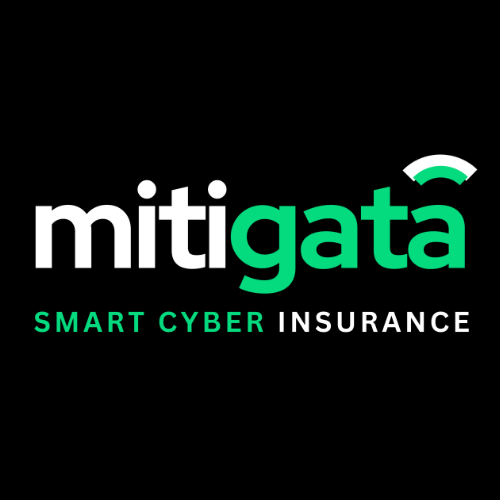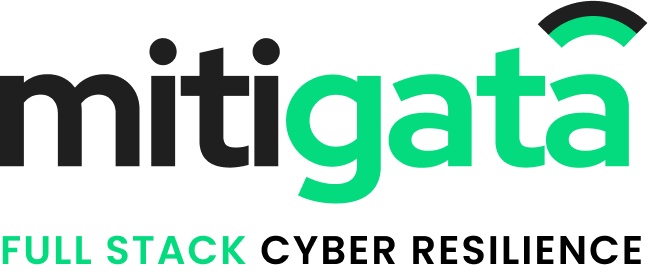10 Most Common Cybersecurity Threats of 2025
Hackers attack every 39 seconds on average. Yes, you read that right—every 39 seconds.
Is your business prepared for that kind of constant threat?
The majority of businesses are not. Today, only 14% of companies feel confident against a cyberattack. That means a vast majority of businesses are left exposed.
As per cybersecurity Statistics, the globally estimated cost of cyberattacks is expected to reach $10.5 trillion by 2025. This cost is enough to shake any industry.
It has also been reported that human error is the biggest cybersecurity risk. One wrong click or a simple oversight by an employee can make the company suffer a considerable loss.
So, what are the top cybersecurity threats, and how can your business avoid them? In this blog, we’ll unpack the most common cybersecurity threats businesses face in 2025 and how you can prevent them.
Defend Your Business with Top-Tier Cybersecurity Solutions
Maximize protection with our advanced cybersecurity services that detect, prevent, and respond to threats.

Top Cybersecurity Threats in 2025
1. Data Breaches
Data breaches continue to be a massive threat in 2025, and their costs keep climbing. As per IBM’s Data Breach Investigation Report (DBIR), the average breach cost hit $4.90 million last year.
These attacks refer to unauthorized access to confidential data, including customer records, credit card information, and business secrets.
- Vulnerable industries: Healthcare, Finance, Retail
- Solution: Make use of secure passwords and regularly update encryption techniques. To further safeguard endpoints, employ VAPT (Vulnerability Assessment and Penetration Testing) and EDR (Endpoint Detection and Response).
2. Malware and Ransomware Attacks
Malware refers to malicious software designed to damage or gain unauthorized access to computer systems. It comes in many forms, such as viruses, worms, and spyware.
Ransomware is a type of malware that encrypts files or locks systems and demands payment to unlock them. In a recent ransomware attack on Coca-Cola, the attackers demanded a ransom, but Coca-Cola refused to negotiate or pay.
In response, Everest (the ransomware group) publicly leaked data of nearly 1,000 employees, raising serious concerns about identity theft and data misuse.
- Vulnerable industries: Healthcare, Government, Manufacturing, Finance
- Solution: Ensure timely software updates and regular data backups. Also, use firewalls to block unauthorized access.
3. Exploitation of Internet of Things (IoT) Devices
Smart appliances, connected vehicles, and industrial sensors are some of the IoT devices that are more vulnerable to cyberattacks.
These devices commonly run on default settings, which hackers can easily attack as entry points into broader systems.
- Vulnerable industries: Manufacturing, Healthcare, Retail
- Solution: Secure IoT devices by changing default passwords, updating firmware, and using strong encryption. You can even use Mobile Device Management (MDM) to secure such devices.
4. Deepfake technology
Deepfake-based fraud has grown by 3000% in recent years, making it a rapidly emerging cyber threat.
Attackers use artificial intelligence (AI) to generate highly realistic fake audio or video to impersonate company executives, such as the CEO. They then trick staff into facilitating fraudulent transactions.
- Vulnerable industries: Finance, Healthcare, Legal
- Solution: Implement Email Security solutions to detect fraudulent messages and verify transactions with Multi-Factor Authentication (MFA).
5. Artificial Intelligence (AI)-Driven Cyberattacks
AI-driven attacks have become a rising cybersecurity threat since hackers are using AI more effectively for scams.
In 2025, this includes AI-backed ransomware, automated vulnerability scanning, and adaptive phishing campaigns.
According to reports, around 72% of Indian organisations were hit by AI-powered attacks in the past year.
- Vulnerable industries: Technology, Government, Healthcare
- Solution: Adopt defense systems like XDR (Extended Detection and Response) to detect and respond to AI-driven threats in real-time. Regular penetration testing and AI-based security systems are critical.
Complete Threat Protection with Advanced EDR and XDR

6. Phishing and Social Engineering
Phishing takes place when cybercriminals send fake emails or messages that look legitimate.
With this, individuals accidentally reveal sensitive data like login credentials. Social engineering takes it further by manipulating people directly.
Microsoft continues to be the most impersonated brand in phishing attacks, with fake support emails and alerts being common tactics.
- Vulnerable industries: All industries, especially Finance and Healthcare
- Solution: Establish a Phishing Simulation and provide regular training to staff members on how to spot phishing attempts.
7. Third-party and Supply Chain Attacks
Supply chain attacks take place when hackers target a company’s third-party vendors or service providers to gain access to sensitive data.
In December 2022, Uber experienced a breach through a compromised third-party vendor, Teqtivity, resulting in the exposure of employee data.
- Vulnerable industries: IT, Finance, Government
- Solution: Perform routine third-party vendor audits to find weaknesses in security. Use Zero Trust Network Access (ZTNA) so that only trusted partners can access sensitive data.
8. Business Email Compromise
Business Email Compromise (BEC) takes place when cybercriminals gain control of internal email accounts and use them to impersonate executives or employees. They aim to request money transfers or access to sensitive data.
There have been many cases where people looking to purchase a property transfer money to cybercriminals after receiving a spoofed email from the company.
- Vulnerable industries: Finance, E-commerce, Real Estate
- Solution: Employ MFA for email accounts and teach staff to recognize shady emails, particularly those that ask for money.
9. SQL Injection and Web Application Vulnerabilities
A SQL injection attack allows hackers to access and alter databases by inserting malicious SQL queries into user inputs.
Database corruption or data leaks may occur if your web application is not safeguarded.
- Vulnerable industries: E-commerce, Healthcare, Technology
- Solution: Patch and update web apps on a regular basis. Protect sensitive data by using Web Application Firewalls (WAFs) and implementing input validation.
10. Cloud and Mobile Security Vulnerabilities
With more businesses depending on cloud platforms and mobile devices, securing these endpoints is very important.
Attackers exploit incorrect setups or inadequate access controls in cloud services when there is a breach.
A well-known cloud provider called Snowflake had a data breach in May 2024 that exposed millions of user accounts due to weak access control measures.
- Vulnerable industries: All industries, especially Finance and Healthcare
- Solution: Use DLP (Data Loss Protection) solutions to secure data stored in the cloud and implement MDM (Mobile Device Management) for safe mobile access.
End-to-End MDM with Mitigata by Your Side ,Secure business Today!
Get powerful MDM tools at the best rates without compromising on security.

Conclusion
As we’ve seen, from data breaches to AI-driven attacks, cyberattacks are only increasing. Unfortunately, most firms are not adequately prepared to deal with these cyber risks.
Mitigata specializes in assisting businesses in mitigating these cybersecurity dangers. We offer a variety of services, including phishing simulation, vulnerability assessment, and penetration testing (VAPT), managed detection and response (MDR), and zero trust network access.
Stay secure and protected, and let us assist you in mitigating the risks that matter most.
FAQS on Most Common Cybersecurity Threads
Q1. What are the threats in cyber security?
Cybersecurity threats include data breaches, malware, ransomware, phishing, and exploitation of IoT devices. These threats can lead to unauthorized access, data loss, and financial damage.
Q2. What is an example of a cyberthreat?
An example of a cyber threat is ransomware, where hackers encrypt a victim’s data and demand payment for its release, often affecting businesses and individuals globally.
Q3. What is meant by cyber threat?
A cyber threat refers to any potential danger or malicious activity aimed at disrupting, stealing, or damaging computer systems, networks, or data.
Q4. What is the difference between a cyberthreat and a cyberattack?
A cyber threat is a potential risk or vulnerability, while a cyberattack is the actual exploitation or execution of that threat, resulting in damage or loss.
Q5. What are security threats and its types?
Security threats refer to any event that poses a risk to the integrity, confidentiality, or availability of data and systems. Common types include malware, phishing, social engineering, and insider threats.
Q6. What is meant by cyber risk?
Cyber risk is the potential for harm to an organization or individual caused by cyber threats, such as data breaches or financial fraud, due to inadequate security measures.
Q7. What is the most common cyber risk?
The most common cyber risk is phishing, where attackers trick individuals into revealing sensitive information like login credentials or financial details via deceptive emails or websites.


An overview of top cybersecurity risks and practical solutions for businesses is provided in this article. There are clear steps to improve security and mitigate threats in key areas such as data breaches and phishing.